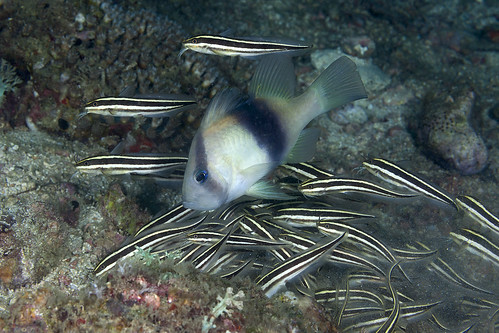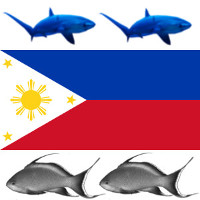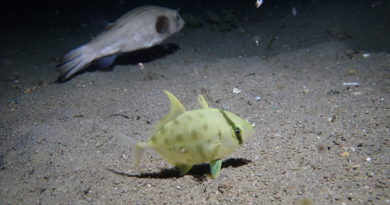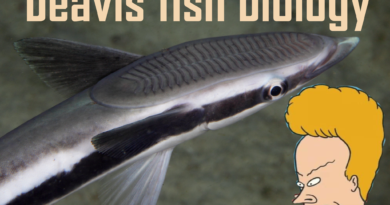Soapy Fish not Soapy House
In Japan, an euphemism for a brothel is “soapy house”, where you get properly soaped down. This is not what this post is about. It’s about soapy fish.
An interesting type of behavior involving a soap(y) fish which I have observed in Malapascua/Cebu and Dauin/Negros is that a soap fish follows a school of striped marine catfish. The catfish stir up small prey animals, and the soap fish feeds on these seconds. I don’t believe that the catfish profits from the soapfish in any way, hence this is a case of commensalism.
This interaction is briefly described in this paper:
“Swarms may be followed by other fishes: shrimpfish, Aeoliscus strigatus, barred soapfish, Diploprion bifasciatum, or the puffer, Arothron manilensis, which may enter and feed with the swarm.”
“During “steamroller” feeding in the sand, P. lineatus juveniles were sometimes followed by other groups of teleosts (Aeoliscus, Diploprion, Arothron, Goniistius, Parapercis, etc.) that fed on benthic organisms stirred up by Plotosus (Fig. 9A-b).
Interestingly, I have only ever observed Diploprion (soap fish) following the catfish in the Philippines, even though Arothron manilensis, the Manila puffer, is quite common in Dauin, in the same habitat as the catfish. Clark’s study was conducted in a number of places, the figure with the puffer fish following the catfish is from Indonesia. I’d be curious which environmental factors make the puffer fish take advantage of the catfish in one location but not the other.
Here is a new video of the soap-cat fish interaction from Dauin:
And some older footage from Malapascua:



